|
Idainaru Doragonbôru Densetsu ("The Great DragonBall Legend", or as many fans simply refer to it as, "Legends") was released in Japan on 31 May 1996. It was the first major departure for a DragonBall fighting game's engine. Rather than a series of one-on-one fights on a 2D plane (established throughout the 16-bit era with game series like Super Butôden), in "Legends" players could dash a full 360 degrees around their opponents, and despite being 2D character models ultimately fighting on a 2D field of play, the detailed sprites and extreme verticality of play — not to mention the three-on-three battles — set itself apart in the eyes of not just DragonBall gamers, but gamers of the time in general.
DragonBall Z: Sparking! was released in Japan on 06 October 2005 (and in North America as a worded-out-of-order DragonBall Z: Budokai Tenkaichi a month later on 15 November 2005). Leading up to and upon its release, many fans pointed to it as the second-coming of "Legends" for a new generation of hardware. Even the successor on the PS1 (Final Bout) had been semi-traditional 2D fighting despite its fully-polygonal game design, and for three years the PS2 saw the release of the Budokai series, a new fighting franchise for the DragonBall universe also focused on mostly 2D fighting in a 3D environment. Here was a game with an over-the-shoulder camera angle, fully 3D movements, destructible environments, a plethora of characters... and most importantly, a new series of options.
"Options" is really the best way to describe the PS2 era of DragonBall gaming. No matter which type of fighting game engine you preferred, a semi-perfected version of it was available. For the enthusiasts that loved mostly-2D game play and amazing character animations, there was Budokai 3. For the "feels like the show" crowd that loved being able to select characters ranging from Goku to Appule, there was Sparking! METEOR. For the seriously-old-school crowd that desperately wanted to pull off a quarter-circle and get a Kamehameha, there was Super DragonBall Z. Party gamers in Japan even got their fair share with Battle Stadium D.O.N. on the PS2 and Gamecube, as well as Jump Ultimate Stars on the DS. Whatever type of (fighting) game you wanted to play with DragonBall characters, it was there waiting for you.
What about the "next generation" of consoles, though? With each new series of hardware, the DragonBall franchise gets a sort of "reboot". Just as the first Budokai game brought it back to basics with Saiyan through Cell story arcs, Burst Limit (from the same developer, Dimps) for the PS3 and 360 did the same in 2007. With Spike now developing the self-proclaimed successor/upgrade of the Sparking! series on new hardware with Raging Blast (released near-simultaneously in early November 2009), would fans be able to give up their 150+ characters and refined controls just to have the game running in 720p at 60fps?
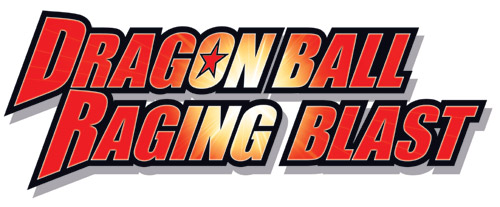
Review of this game was made possible through a PlayStation 3 copy provided by Namco-Bandai. If you are interested in contributing to the site, please visit our "Donate" page or contact us directly.

Review By: Mike LaBrie (VegettoEX)
So how about that there video game...?
Coming off of Revenge of King Piccolo, we were confident that the North American branch of Namco-Bandai would come through with the vocal opening theme and selectable Japanese voices. Hironobu Kageyama's new opening theme, "Progression", roars in with style over the unfortunately bland, awkward, and boring animation. The Japanese voice cast is easily selectable from the "Options" menu, which has other effects throughout the game — the seiyû are listed by name in the "Museum" mode! To see Masako Nozawa get credit in something other than an ending credits video is a strange bit of vicarious vindication. Unlike the Sparking! series and its confusing history of a replaced musical score for its North American release, Raging Blast has its own new soundtrack (unrelated to either Shunsuke Kikuchi's original or Kenji Yamamoto's Kai TV scores) which has been carried over in full. For the first time, Sparking!-styled loyalists can purchase the North American release and get the same experience as the Japanese release.
As with most DragonBall fighting games, immediately after changing the language track over, I jump into a tutorial mode to get a grasp on what is new, what is changed, and how much I will hate (or love!) my controller for the next several hours. The very basic tutorial was simply too basic (how to move, charge ki, melee attacks, etc.), so I jumped out after the one round immediately over to the standard single-player mode; multiplayer would have to wait until I felt comfortable in the changes from Sparking! METEOR. I eventually returned to the tutorial modes for the sole purpose of understanding terms like "Snap" that showed up in missions later on, as these are not detailed at all in the instruction manual.
The game's main single player story mode (called "Dragon Battle Collection") at first appears to be laid out the same as all previous games, but a bit of scrolling around reveals that it is much more open. You are free to select most of the main fights from the entire range of the series right from the get-go. Want to fight against Raditz and then skip ahead to Cell? Go for it. Another pleasant surprise was the entirely separate "What If?" storyline section (rather than being spin-offs within a standard story arc), also very much wide open from the start of the game. If the tried-and-true original storyline bores you after playing it for the eighth time in as many years, skip over to fight as Future Trunks training his normal-timeline self, or Jheece and Butta denying Dodoria and Zarbon entry to Ginyu-Tokusentai (until Zarbon goes into monster mode and Jheece realizes he can stay the best-looking one on the team).
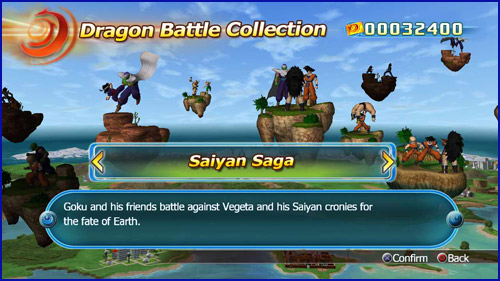
As with every other DragonBall fighting game, the point of its single-player mode is to toss situational-fights at you with point achievements that act as the currency to unlock characters, outfits, and extra fights... all disguised as an in-depth and engaging story. I say "disguised" because that is exactly what it is: a false disguise. I may sound like a broken record, but playing from the Raditz fight to the Buu fight year after year after year is a tired and pointless exercise in artificial game-life extension. We thankfully have many more characters and transformations unlocked from the start with each successive game, but it seems that despite Street Fighter IV proving that most fighting game fans are completely sick of character unlocks, DragonBall fans are eager and willing to settle with this process year in and year out.
Don't get me wrong; characters like the new SSJ3 forms of Broli and Vegeta are perfectly suited as unlockables where a price must be paid (whether that is simply time or in-game currency). Purchasing additional "What If?" fights and extra costumes is also a perfectly fine use of the single-player experience, but when you look at just how many question marks are on the character select screen, you can feel a little bit at odds with yourself about whether or not you want to put in the effort.
The main problem with the unlocks is that the currency is not what you think it is, it is not explained in the manual for the game, and it is not obvious within the game itself. While you do gain D-Points on the loading screens and by winning battles, this does not actually enable you to purchase extra fights and costumes. These require a second form of in-game currency, represented by "stars". These stars can be earned by completing a series of specific tasks within a stage, such as defeating it on the hardest difficulty setting, maintaining a certain health level, swaying thirty times within a round, etc. This is all fine and dandy, except that you do not gain the ability to even see these circumstances, never mind use and attempt them until after you have completed a stage.
Yes, unlocking things requires you to re-play stages that you have already beaten.
As promised, online multiplayer runs at a steady 60 fps, with the exception of any minor graphical glitches. Even with less-than-optimal connections indicated on the opponent's side, the game ran fine. PSN provided a smooth online experience for us, though it was necessary to create a "Custom Match" a couple times when no opponents could otherwise be found.
The raw character models themselves are big, detailed in the right places, and colorful. A little extra on the line thickness would have been preferred, but they still look fantastic the way they are. The problem I have always had with Spike's character models as opposed to Dimps has been in the way they move during non-game play situations. Characters will simply plop down in their standing animation and talk; they will awkwardly fall over at the end of a cut scene; they will recycle fighting animations in areas that just do not make sense. Other times they step up their game and completely catch you off guard, such as the ending cut scene of Piccolo saving Gohan from Nappa's blast which accurately mirrors the manga and TV version down to the slightest detail in terms of color and motion.
During battle, the characters look and move fantastically. The models and designs look better up close than they do from a distance, which speaks to the detail and care put into them. Movements and motions are convincing and accurate down to the closest detail: the opponent will flinch around in horror as Zarbon's monster form torpedoes toward the ground with them in his grasp, and they will struggle to keep up with Goku's movements as he slams around them using Kaiô-Ken 2X.
The background stages are another issue all together, though. In all honesty, they looked more convincing and felt more "real" previously in Sparking! METEOR, despite the limitations of the hardware compared to the current game. Where there are more items to interact with, it feels cluttered and claustrophobic. Where there are less items and longer draw distances, it feels barren and lifeless.
Even on an HDTV, the subtitle text is incredibly difficult to read. It is a thin, white font with virtually no border surrounding it. Many times what is being spoken by the characters (and therefore subtitled on-screen) makes absolutely no sense. During a "What If?" fight where Dr. Gero is seemingly in control of Broli, the battle between the two has dialogue from Dr. Gero as if he were not in the middle of a fight, and somehow speaking and referring to an entirely different set of characters.
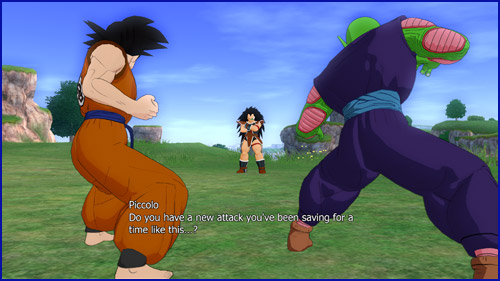
The new "HUD" took some getting used to. While I immediately picked up on the ki meter, I did not quite piece together the health meter that surrounds and fills the same circle. Life "bars" are represented by dots within the health meter, which itself is opposite the ki meter surrounding the character's face/icon. As with previous games, characters can have multiple life "bars" that may or may not be replenished based on item customization and forced story mode situations. There is no different "Baseline Ki" for separate characters, though you typically need at least half of your bar filled in order to perform special attacks, which does fill up to that point automatically over time.
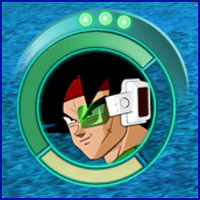
The menu system for the game is a mixed bag. On one hand, the "Dragon Battle Collection" mode spinning dioramas that represent each fight are amazing nods to things like chapter title pages in the manga. They have personality, and are some of the few elements that actually make Raging Blast feel like a new, individual entity. On the other hand, menu items hidden away in areas like the "Ultimate Customize" section are too faded, obscured by other items on-screen, and just plain ol' difficult to navigate around. Perhaps the biggest offender is in how you spend the in-game currency, split between the stars and D-Points. While the stars are spent within its own sub-menu item contained in the "Dragon Battle Collection" area (where you can purchase some customization items such as alternate costumes, among battle unlocks), D-Points are spent in a sub-sub-section of the "Ultimate Customize" area. Once you blindly navigate your way around and try a few things it makes sense, but with little-to-no in-game documentation on how to do it all and just one minor note in the instruction manual... it is a little bit of a mess.
In a sense, Raging Blast is a semi-DragonBall Kai audio experience... at least on the voice performance side. Some of the cast members, despite appearing in games as recent as Sparking! METEOR and Burst Limit, have been replaced with their Kai counterparts. Some are understandable — Hirotaka Suzuoki passed away in 2006, replaced temporarily in some video games by Mitsuaki Madono, and ultimately in Kai by Hikaru Midorikawa (also the voice of #16 and Paikuhan). Others are head-scratchers — Shôzô Îzuka just showed up in Revenge of King Piccolo to play Hat-chan, but not Nappa in Raging Blast...? A breakdown of some of the voice changes is below:
Tenshinhan |
Hirotaka Suzuoki
(deceased) |
Hikaru Midorikawa |
Nappa |
Shôzô Îzuka |
Tetsu Inada |
Dodoria |
Yukitoshi Hori |
Takashi Nagasako |
Zarbon |
Shô Hayami |
Hiroaki Miura |
Gurd |
Kôzô Shioya |
Yasuhiro Takato |
Jheece |
Kazumi Tanaka |
Daisuke Kishio |
Butta |
Yukimasa Kishino |
Masaya Onosaka |
Recoome |
Kenji Utsumi |
Seiji Sasaki |
Ginyu |
Hideyuki Hori |
Katsuyuki Konishi |
|
The cast is in top form. While delivering some lines slightly differently than our fanboy memories will recall from the original TV series, all of the characters are played like themselves with conviction. Norio Wakamoto's speaking style adjusts appropriately throughout all of Cell's form, Ryô Horikawa cracks a little bit while firing the Final Flash, and Masako Nozawa leads the team perfectly as always. The only "meh" performances come from some of the newer Kai voices, such as Seiji Sasaki as Recoome — it just does not sound like the character and is not convincing in the least.
The English dub was not spot-checked for performance evaluation.
The music is standard Kenji Yamamoto-esque fare, which is both a blessing and a curse. It feels like a natural extension of the compositions and moods recently heard in Infinite World and Burst Limit, which is to say the tunes are sufficient... but mostly forgettable. Raging Blast promoted itself heavily as the next evolution of Sparking!, which used elements of the score and theme songs from the original TV series, mostly composed by Shunsuke Kikuchi. While Yamamoto is a veteran of game composition for the DragonBall franchise and is currently handing the score for Kai, to play a Sparking!-styled game without the original TV series' score does break that "DBZ-simulator" feeling an enormous amount. This may not be a deal-breaker for many American fans, though, since the score for all three Budokai Tenkaichi games (the domestic releases of Sparking!) were entirely replaced in their domestic transfers.
With many Kai elements such as voices being brought in, the question must be asked: would the score from the Kai version of the TV series have been appropriate for the game? With Sparking! receiving Shunsuke Kikuchi's score to drive home the point of it being a "DBZ-simulator", Kai's score naturally would have fit with the next evolution of the game. Perhaps in a sequel...?
The star of the game's musical catalog is clearly the new, vocal opening theme ("Progression") as performed by Hironobu Kageyama. Sparking! METEOR's opening theme ("Super Survivor") was the rockin' guitar song; Burst Limit's opening theme ("Kiseki no Honô yo Moeagare!!") was more ominous and the most uninspired of the new bunch; Infinite World's opening theme ("Hikaru no Sasu Mirai e!") was the adventurous and upbeat song. "Progression" treats us to the shônen-spirit side of the series, very much reminiscent of the opening theme to Revenge of King Piccolo, "POWER OF DREAMER" (performed by Hiroki Takahashi). The blaring horns and matter-of-fact delivery (all with a smile and head-held-high behind it) truly epitomize this era of the series.
The Sparking! series has been accurately described as more of a "DBZ-simulator" than a "fighting game". While it is technically two characters battling each other with life bars, special attacks, and super moves, "fighting game" brings to mind a range of games such as Street Fighter, Soul Calibur, Tekken, etc. This series of DragonBall games is just as much of a fighter as Smash Bros. is a fighter, though; they have their own unique takes on the underlying game play concept that set them apart as something distinct. The camera resides a little pulled back from the shoulder of the playable character, who is free to fly nearly anywhere on the stage (within its imposed limits) and either engage in close-range melee combat, or mid- to long-range attacks with ki blasts.
Popping in Sparking! METEOR a week prior may have been a mistake. I typically drop a DragonBall fighting game within weeks after its release (with the exception of Super DragonBall Z, which receives more pop-ins over time than most games). Having just gotten used to charging ki with the shoulder buttons, I was now expected to charge up using "Down" on the D-pad, never mind using the analog stick to control my character rather than the D-pad. Button-hold-combinations (such as L1+Triangle+Down) to pull off special moves is a thing of the past, now replaced by a simple nudge of the right analog stick in any of the four directions. Think of it like the basic Smash Attacks in Brawl that are mapped to the yellow analog stick, except that this is the only way to perform them. Seemingly running out of buttons, clicking-in the right analog stick is used for characters' ultimate attacks. It appears to have been done intentionally ("simplifying" it from the previous games) to let the player whip out any attack with the use of a single button at any time.
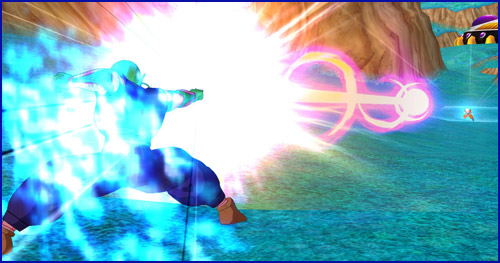
Unfortunately, this creates some control problems. To charge your ki, you must physically remove your left thumb from controlling your character with the analog stick to go to the D-pad. To unleash a super move, you must physically remove your thumb from the otherwise-fully-encompassed face buttons to the right analog stick. This may sound petty and minor, but to competitive players, every split-second spent moving your hand around the controller is a split-second in which you may not be able to respond in time.
The worst example of this is when I became engaged in a close-range hit exchange, which requires that you spin/mash the left analog stick more times than your opponent. Being right-handed, I naturally want to use my right hand to waggle that analog stick as fast as possible, which is a three step process: (1) identify that the attack has begun, (2) remove my right hand from the face buttons, (3) begin twirling the analog stick. Between steps 1 and 2, the (computer-controlled) opponent already has a head-start on me, which on the harder difficulties means I do not stand a chance.
The benefit (and problem) with a control scheme of this type is that it perpetuates the idea that all characters in the game play exactly the same. If you can always melee away with a face button and then just click the right analog-stick and unleash a super move, what incentive do you have to learn multiple characters, never mind all 70+ of them? To be fair, there are minor differences among characters. Jheece's kicks do not reach as far and can have difficulty following-up with a pursuit, while Piccolo's reach with his arms is longer. At the same time, yes — once you learn how to play the game in general, the characters are essentially interchangeable skins with minor differences among them. That may be what you are looking for in a "DBZ-simulator", though. The debate goes back to the very first Sparking! game, and even further back in time to Final Bout with its six independent variations on a selectable Goku character. A game with fewer characters allows for more individuality and in-depth learning (Super DragonBall Z), a game with a ridiculous amount of characters allows for fantastical match-ups at a quick pace (Sparking! + Raging Blast), while a game in-between walks the line between game play experiences (Budokai + Burst Limit). What you are looking for and expecting is up to you.
The types of moves available are as varied as always and as deep as you want them to be. For the defensive players, the "Sway" introduced back in the original Budokai series remains, allowing you to quickly move your body to the left and right to dodge around incoming, close-range hits. "Vanishing" to teleport around and counter your enemies comes in two flavors. A nod to the old Super Butôden games comes in how you can deal with incoming super moves: do you want to try to run away, teleport to the side, or knock it away with a well-timed button press?
Raging Blast changes things up from Sparking! METEOR much more on the offensive side of play. No longer do you have two super moves, two blast attacks, etc. All characters have a "Signature Attack" mapped to the "Circle" button on the PS3 or "B" button on the 360; this may be something like Piccolo extending his arm out. All characters also have four "Super Attacks" that can be customized and independently mapped to the right analog stick, as mentioned earlier. Characters may have more than four available and unlockable, which can be adjusted to the player's liking in the "Ultimate Customize" area for one of the three available custom versions of characters. Clicking in the right analog stick in "High Tension" mode (when your ki is charged up double its maximum) unleashes the character's "Ultimate Attack". The new "Crash Attack" is an extension of the standard throw, with the added benefit of slamming your opponent into a nearby building or wall giving you an extra opportunity to slam away at them.
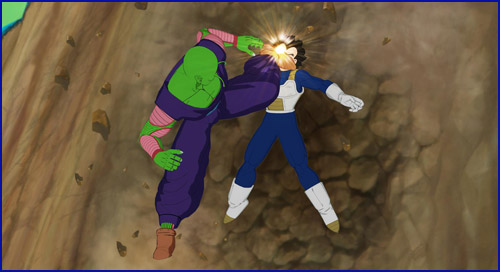
My concern with the plethora of offensive abilities was just that: there are far too many. Never in the heat of battle have I consistently been able to string together a coordinated, thought-out, and responsive combination of super dashes, throws, crash attacks, down attacks, pursuits, snaps, max charges... You could make the argument that the player (being me) just is not well-versed and talented enough to both remember and utilize them all, but there is something to be said for simplicity. Whereas so many areas of Raging Blast do feel simplified from Sparking! METEOR, to have so many offensive techniques as your disposal is a little at odds with that. I find myself resorting to melee attacks followed by pursuits, sometimes comboing into super moves, lots of homing dashes, and all topped off with the occasional "Ultimate". That suffices for the computer-controlled opponents on "Hard", so unless you plan on spending a lot of time in multiplayer, you simply do not need to be well-versed in the game's available abilities. Thankfully, online multiplayer is available in a working format for the first time (totally ignoring Sparking! METEOR on the Wii), so the incentive is actually there to "learn the game".
Both the offensive and defensive sides are plagued with far too many analog stick rotation quick-time events. Beam clashes have traditionally been handled this way, but you will also be twirling the stick if you and your opponent slam into each other at high speeds. For the first time since the Nintendo 64 days, I have actually bruised the palm of my right hand from too much analog stick twirling.
The control itself feels incredibly sluggish at times. Never do I feel like I am in control enough to pull of a special move with the flick of the right analog stick after a string of melee attacks; whether or not the recovery period (called "Stiffness" in the game) is simply too long with some characters or the control itself truly is that unresponsive, it does not matter — it is frustrating when you do not feel in control.
Beyond a jump to new hardware, the innovation in Burst Limit came from its art style, which carried over to the new "Drama Pieces" game play element. Certain scenarios would occur during a fight which would trigger a mini-cut-scene mid-battle, occasionally benefiting the player with a stat boost. Raging Blast seems to take a nod from this, though only in its single-player mode. The screen will occasionally letterbox and focus on a character's face while speed lines fly past in the background; meanwhile, the villain is narrating some dire piece of information relevant to the plot. An in-game-engine, mini-cut-scene will take place, such as Goku and Piccolo discussing their next step for taking on Raditz.
The biggest weakness with the game play, and in turn the game as a whole, is the camera. Far too many times will you be met with nothing more than a semi-transparent crotch of your opponent clipping through the side of... well, it may be a mountain, it may be a rock, it may even be your own character... you will not entirely be sure. Other than shifting the camera to the left or right of your side view, you have no control over it (not that there are any more buttons to use), and will curse its ineffectiveness time and time again. Whether you have lost sight of and relation to your opponent, are stuck behind the geometry of a destructible object in the environment, or are simply too close to anything... you just cannot see what is going on.
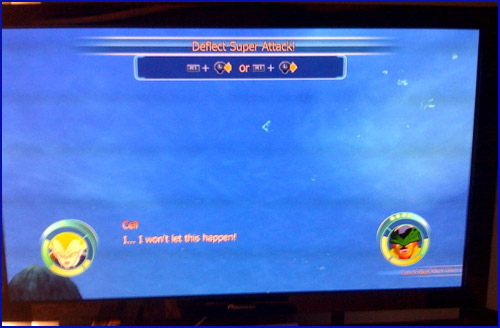
Dedicated players will learn to judge distances just as they did in 1997 with "Legends" and exactly how far to fly up before attacking your opponent at the right time... but it will only be these dedicated players who care enough to drag their feet through it. In 2009, it is unacceptable to have a fighting game where you cannot see your own character or opponent at any particular time during the fight. This has nothing to do with new hardware and unfamiliarity with the game play mechanics — it is just sloppy (rushed?) programming. They got it right in 2007, and got it horribly wrong in 2009.
"What If?" battles and mini-stories, while expected in some capacity, were done beautifully and to the expectations for a first-run in a new series of games. Unlike the imaginary scenarios from previous games, they are separated out into their own selectable menu item, similar to Sparking! METEOR. You can independently select any "What If?" battle from the menu, ranging from Bardock facing his grandchildren in a future premonition (as impossible as that sounds), all the way up to a battle with the newly-SSJ3 Vegeta taking on all of the other SSJ3 characters.
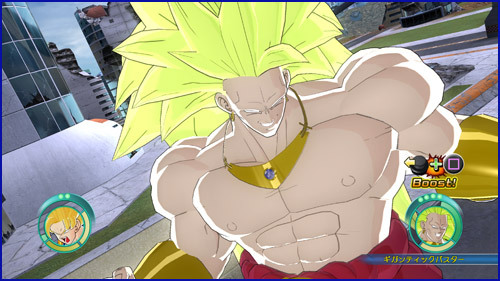
The new SSJ3 upgrades for Broli and Vegeta are not nearly as celebrated within the game as one might expect. The scenarios to unlock them each cost 20 stars, the maximum amount of any unlockable. Strangely, Broli does not even reach SSJ3 within the very scenario in which you unlock him; you essentially play the fights of DBZ movie 11, instead.
The humor and self-aware nature of these battles finally puts a fresh spin on the series. We have had hints here and there over the years (such as the Piccolo-Daimaô fusion in the first Bukû Tôgeki / Supersonic Warriors and the "Raditz Is [Temporarily] A Good Guy" story from Sparking! NEO), but to separate them out and celebrate these little stories is a huge jump forward. While they are ultimately just a dressed-up distraction to get you ready for yet another one-on-one fight, the absurdity of the fights is something not seen since "Legends" with its "SP Battles" (with scenarios like Goku & SSJ Goku & SSJ3 Goku vs. Vegeta & SSJ Vegeta & Majin Vegeta).
Another nod to the "Legends" style of game play experience is the character narration overtop some of the battles. Piccolo will berate you for succumbing to Raditz's speed mid-battle, while Goten and Trunks will marvel at how Gogeta and Vegetto are somehow fighting each other (and how that in turn makes them brothers, much to their personal excitement). Unlike "Legends" where you had to semi-pause to get the other-character-narration (while the computer took over control of your character momentarily), in Raging Blast it is simply spoken dialogue and subtitles overtop the action.
The additional game modes are just there for the sake of being there. The various "Super Battle Trial" missions are occasionally fun to hop into, but they will not be the meat of your experience with the game. Completing special objectives in the mode will give you the opportunity to battle for the seven Dragon Balls; collecting all of them will summon Shenlong and grant you a wish for special customization items.
Minor graphical glitches arise in nearly every battle, each time prompted by poor camera placement. The promised 60 fps takes a drastic nose-drive when a wall or other background stage object gets in the main viewing area, which heavily affects the controls.
The game also is prone to other glitches, completely independent of the camera. During my first attempt at the Bardock vs. Goten and Gohan "What If?" battle, after Goten's defeat, Gohan never entered the battle stage. Goten's defeated body laid crouched over on the ground, and I was free to fly around and do whatever I wanted... but I could not connect any attacks with Goten, nor would any combination of attacks, movements, or ki charging trigger Gohan's arrival. I was forced to quit the match and try again.
At its worst, the game flat-out crashed entirely during one battle in the "What If?" scenario. Just as the final hit to complete the stage on "Hard" and receive a star is about to land, the game froze mid-attack. The music continued to play, but nothing short of restarting the system would fix the problem.
Curiously, the options for an online multiplayer match include "Use downloaded Characters" as an allowed setting. Leading up to the game's release, we knew it would include some type of downloadable content, though it was unclear to what extent. If the game is set to allow the use of downloaded characters down the line, how will this be handled? Does this mean that both players will need to have the character(s) downloaded? What if one player does not but still wants to allow it? Does this mean that there are characters hidden away on the disc that are simply inaccessible unless later paid for? As of this review, we simply do not know.
If you are lucky enough to live in certain areas of Europe that did not get your orders canceled, a "Limited Edition" version of the game shipped that included an art book, soundtrack, and more. Our German buddy Timo sent along these pictures:
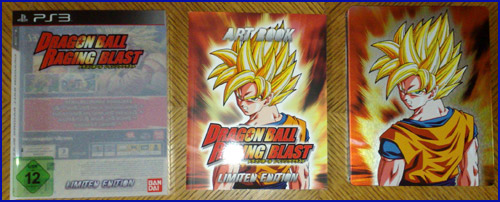
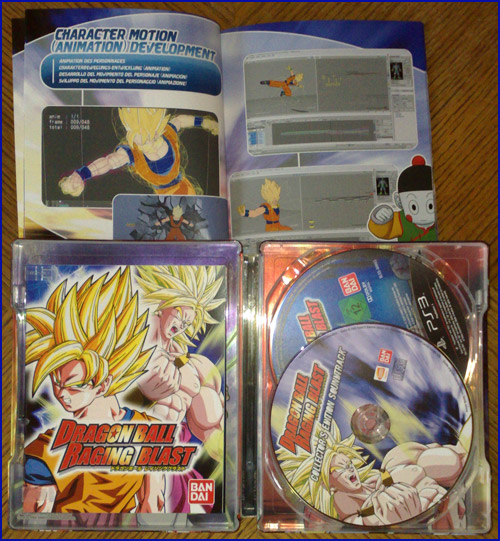
Unfortunately, no "Limited Edition" version was produced for the North American (or Japanese) market, though this does not affect our thoughts on the game itself.
Raging Blast has so many elements in its favor: detailed and high-definition character models, customizable super attacks for each character, fantastic "What If?" mini-storylines, great voice acting, nostalgic menu selections...
Unfortunately, the camera alone is enough to keep all but the most heavily-dedicated DBZ fans and gamers at bay. You have played this game before on a previous generation of hardware (Sparking! METEOR aka Budokai Tenkaichi 3), and when you played it before there was a lot more polish and refinement. Even with the graphical hit compared to Raging Blast, it still holds its own with the fluid movement and detailed background stages.
That is part of the main problem with Raging Blast: its identity crisis. In wanting to be the next evolution in the Sparking! series, it seemingly begs for comparisons. Sadly, hardly any of those comparisons are going to reflect well on the newer game. As much as players turned their nose up at Burst Limit and proclaimed it to be nothing more than a high-definition remake of the first Budokai game, at least it tried new things like the "Drama Pieces" and special art style. Raging Blast does none of these things, and it is therefore very difficult to defend it as anything more than a high-definition remake of the first Sparking! game.
Raging Blast will have a longer life span for some players simply due to the inclusion of online multiplayer. Were it not for this key feature, the game might not be worth any type of investment. It is filled with frustration after frustration after fun moment after further frustration. The rewards simply do not outweigh the effort and dedication necessary.
There is a lot of promise for Raging Blast, but it falls victim to its unpolished glitches and annoyances. Unless you can get it for cheap and plan on spending a lot of time online with other players, Sparking! METEOR is still your best "DBZ-simulator".
Raging Blast was developed by Spike and published by Namco-Bandai, released in North America on 10 November 2009. MSRP $59.99. Review copy received for PlayStation 3. By review publication, 93 of 103 "Dragon Battle Collection" stages complete, all characters unlocked, 40 stars obtained. All "Dojo" tutorials completed. Battles and missions accomplished on varying difficulty settings. Online multiplayer sessions completed.
Raging Blast is available nationwide at most game retailers.
|